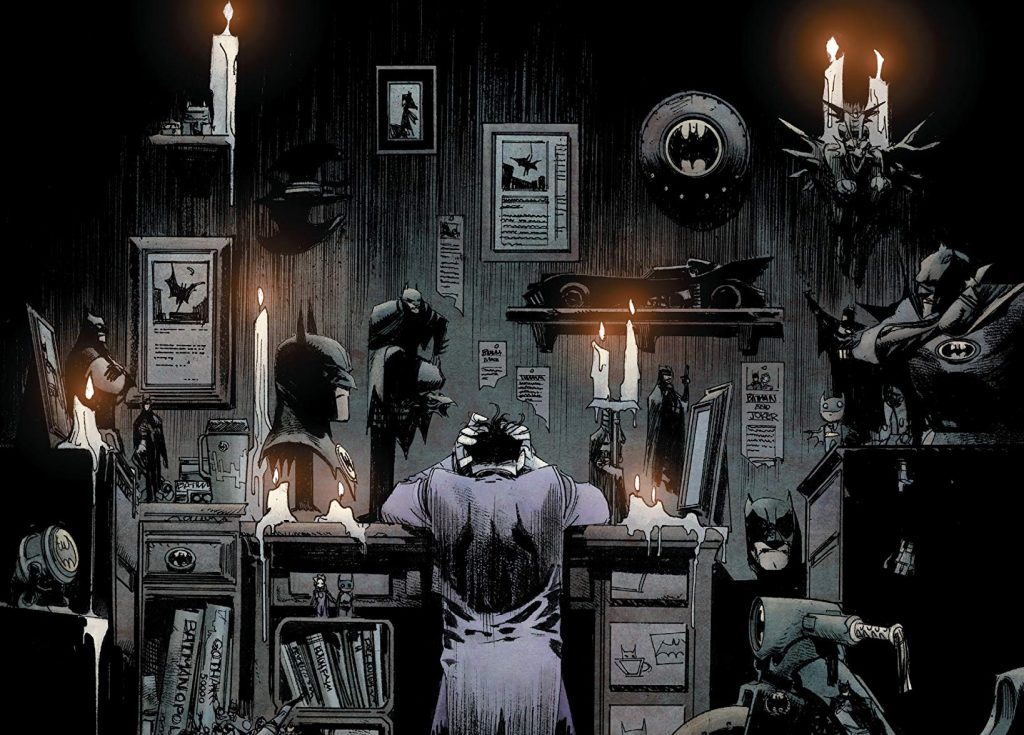BATMAN: WHITE KNIGHT examined as an ELSEWORLDS tale by Rob Veatch III
Characters can go on forever without aging while their stories just keep building. This creates rich histories and deep relationships that fans love, but it also limits the avenues of storytelling. At the end of any given story arc, things must return to a certain status quo if the stories are to continue.
But every now and then, you gotta ask “What if?”
ELSEWORLDS was an imprint of DC Comics, used from 1989 to 2003 to do just that. It featured stories using established characters with new twists that set them apart from their usual settings.
BATMAN: WHITE KNIGHT is an 8-issue limited series from writer/artist Sean Murphy with colorist Matt Hollingsworth and letterer Todd Klein, originally published from late 2017 into 2018. While it came long after DC stopped using ELSEWORLDS, it follows in the footsteps.
The thing about WHITE KNIGHT and how it fits into the ELSEWORLDS concept is that it’s not the broad concept itself that requires it be set apart from the mainline continuity.
It’s in the details.
Most ELSEWORLDS stories have a very clear elevator pitch that immediately tells you why they are outside the canon. Batman in the 1880s hunts Jack the Ripper; Batman becomes a vampire; Batman is a pirate on the high seas; Superman is Batman.
With WHITE KNIGHT we get: The Joker is cured of his psychoses and quests to clean up Gotham through legal means while revealing Batman and bureaucratic corruption to be true plagues on the city.
That’s not quite as concise as the others, and it’s also not immediately clear what sets it apart from established continuity. It’s really when you get down to the details of the story that you begin to see why it benefits from being set in its own little world.
Murphy also gets to design his own Batmobile, while making room in his story for many Batmobiles past (It’s the car, right? Dude loves the car.) But so far, none of these things set it firmly outside of established canon. In fact, if WHITE KNIGHT could fit into any pre-existing Batman canon, it might be the 90s animated series — further down the road and more grown up, Batman, Joker, Nightwing, Batgirl and particularly Harley Quinn seem like they could have evolved from those characters that many of us grew to love on weekdays after school.
Murphy also drops in lots of little Easter eggs and uses characters that are best known from the animated series. The one detail that breaks this theory is the use of Jason Todd in the story, but I won’t spoil that here.
In my opinion, the biggest and most important difference in WHITE KNIGHT is the fact that The Joker, in all his criminal history, has never killed anyone, or at least he’s never been convicted of it. To buy into the premise of Jack Napier’s reformation, the reader has to believe that there may be a decent man at the core. There needs to be plausibility to the idea that he really is trying to do good and to atone for his sins. If The Joker was the mass-murdering psychopath established by decades of mainline DC continuity, believing that he could be cured would be a bridge too far.
How effective are Batman’s methods for fighting crime? Is he just punishing the poor while maintaining the dominance of the rich? Could Bruce Wayne do more good as a philanthropist by targeting the roots of crime? Should Batman share his technology and resources with the police?
I believe that writers usually steer clear of these questions because the answer is often yes, and to address these issues in-story would call for lasting changes that would just deviate too far from the status quo.
But in WHITE KNIGHT, Murphy has the freedom to take his story to places that mainline continuity won’t.
This Batman shows some real changes at the end of the story, and we’ll get to see later this year where those changes lead in BATMAN: CURSE OF THE WHITE KNIGHT. Sign me up, baby!
Sean Murphy has a very distinctive style. His faces and poses are packed with personality. His inks are thick and sketchy as appropriate for Gotham, and the man knows how to use shadows. The action is incredibly dynamic and there’s a sense of motion even in calm scenes.
Matt Hollingsworth’s use of color adheres to a consistent style that establishes mood and atmosphere first and foremost. Each scene has a limited color palette, and you’ll never see a blue sky in Gotham. This place is dusty, muggy and oppressive. Even in these harsh settings, Murphy’s character acting is strong enough to create some very sweet and touching moments.
This is a book any Bat-fan needs to check out. While we’re being treated to wonderful monthly stories in the pages of BATMAN and DETECTIVE COMICS, there will always be a place for stories and creators that dare to do something different.
The legacy of ELSEWORLDS lives on. – Rob Veatch III

